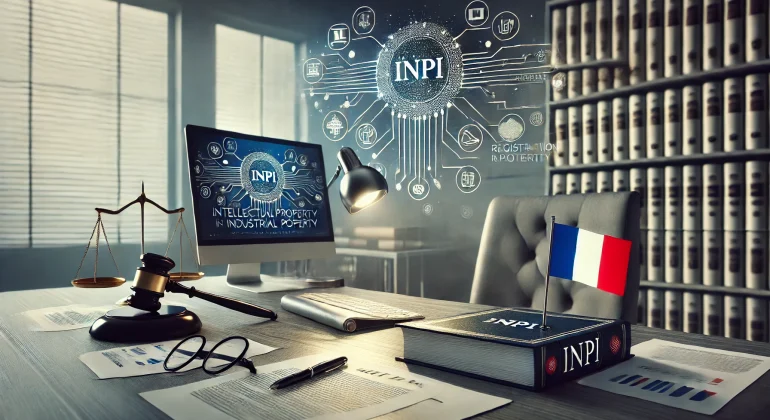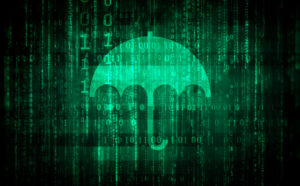.brand extension: A complete guide for companies ahead of the ICANN 2026 wave
As digital trust becomes a strategic asset, companies are looking to regain full control of their online identity. The forthcoming opening of the Internet Corporation for Assigned Names and Numbers (ICANN) second round for personalized internet extensions, known as .brand TLDs or brand TLDs, represents a rare opportunity to build a sovereign digital territory under your own brand.
The .brand 2025 Circle, organized by the Afnic, brought together pioneers and experts in the field in October to shed light on the challenges and conditions for success in this new wave. Nathalie Dreyfus, founder of Dreyfus law firm, shared her expertise on the central role of intellectual property in preparing applications for a .brand. Firmly anchored in this context, the journey to apply for a .brand extension requires strategic foresight. This guide provides companies with a practical roadmap to understand why it matters, how to prepare, and what success factors to keep in mind ahead of the 2026 wave.
Consider a .brand extension?
Digital sovereignty and enhanced security
With a .brand extension, a company gains exclusive control over its top-level domain. It defines who can register sub-domains, how they’re managed, and under what security standards. Solidnames emphasises that one of the major benefits of a brand TLD is security – preventing phishing, cybersquatting and misuse of the domain namespace. A .brand is much more than an extension – it is a sovereign digital zone that promotes trust, emphasizes Nathalie Dreyfus.
Brand coherence, differentiation and innovation
A .brand extension allows all your digital services – website, extranet, apps, partner portals – to operate under a consistent naming architecture (e.g., service.company.brand). This unified digital footprint strengthens brand identity and helps you stand out. Solidnames points out that brands which have registered large numbers of domains under their .brand extension – for example top German and French firms – show how the model can work when used actively.
Strategic asset and portfolio optimisation
According to Solidnames, brand TLDs represent long-term digital assets. They provide flexibility: you can register names for marketing campaigns or future services without negotiation and fend off third-party registrations. In essence, a .brand is akin to owning your own digital real estate.
The investment: costs, returns and considerations
Applying for a .brand extension involves significant investment: registry setup, technical infrastructure, governance, ongoing maintenance. Solidnames notes the next round is expected in 2026, and preparation begins much earlier. Companies must therefore view this as a strategic investment, not just a marketing or IT project.
Key ROI levers:
– Strengthened trust
– Brand protection
– Ownership of your digital domain
– Potential cost savings in defensive registrations
Preparations ahead of the 2026 wave
Timeline and milestones
Solidnames explains that while the official application window opens around April 2026, the preceding Applicant Guidebook (AGB) of the ICANN will be published earlier, and the overall selection process may conclude late 2026-early 2027.
Internal preparation steps
– Assemble a multidisciplinary team: legal, brand management, IT infrastructure, cybersecurity, marketing
– Conduct a feasibility study: technical, governance, cost-benefit
– Define concrete use-cases for the .brand extension: client-facing, partner access, internal services, campaigns
– Integrate your intellectual property strategy: protect your brand, secure trademarks across jurisdictions, align domain trademark strategy
Solidnames emphasises this alignment.
Domain naming policy and governance
Solidnames stresses the importance of a full naming charter: spelling rules, sub-domain conventions, renewal strategy, registration-abandonment policy. This should be part of the governance framework of your .brand registry.
Risks and pitfalls to avoid
– Under-use: many brand TLDs register few domains. Solidnames notes that only a small percentage exceed several hundred domain names.
– Governance and cost burden: the registry must be operated with robust rules, otherwise risk to brand credibility.
– Lack of strategic vision: without clear use-cases and measurement, the .brand might remain a symbolic asset rather than a performance lever.
– Regulatory process uncertainty: the timeline, rules and costs may evolve. Early preparation must factor in flexibility.
For Nathalie Dreyfus, the success of a brand depends on consistency between legal, technical, and marketing perspectives.
Keys to success
- Clear strategic objective: define what the .brand is for and who will benefit from it
- Active use-case roadmap: show how domain names under the extension will be used – not just registered
- Governance clarity: process, roles, naming policy, renewal and abandonment rules
- Measurement plan: metrics on traffic, trust, domain utilization, cost versus benefit
- Strong alignment with brand IP strategy: ensure the extension supports your brand identity and legal protection
- Start early: even though the application window is later, the groundwork must begin well in advance
Dreyfus law firm role
Dreyfus law firm has been helping companies protect and enhance their intangible assets for over 20 years. Our team helps trademark owners to:
– Assess the relevance of a .brand for their digital strategy
– Compile a complete ICANN application
– Define governance and registration policy
– Secure the trademark and subdomains
Conclusion
The next wave of brand TLDs offers companies a rare window to convert their domain strategy into a true strategic asset. By securing a .brand extension, you can reinforce brand identity, enhance trust, control your digital territory and innovate in naming. But the window for action is limited: preparation must begin now.
Solidnames analysis underscores the fact that those who treat a .brand as a long-term governance, brand and digital strategy will derive the greatest value. The .brand is the new frontier of branding – it transforms the domain name into a strategic asset, concludes Nathalie Dreyfus.
FAQ
What is a .brand (brand TLD)?
A .brand is a top-level domain reserved exclusively for a company’s trademark. It allows that company to manage the namespace, register sub-domains, and build a unique digital identity.
What does it cost to apply for a .brand?
The costs are approximately USD 200,000, and they include the application, registry ICANN fees, setup of infrastructure, governance, ongoing operations. This is a long-term investment.
When can I apply for a .brand?
The anticipated timeframe is around April 2026 for opening the application window, with substantial preparation required in 2025.












